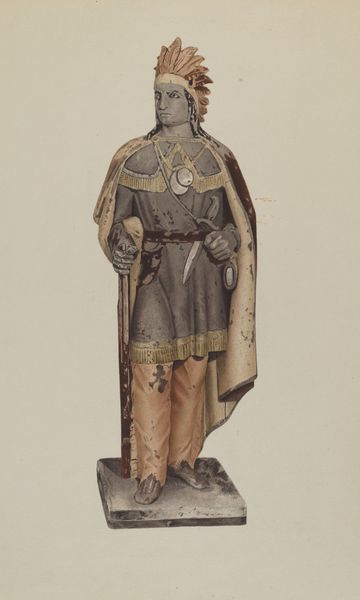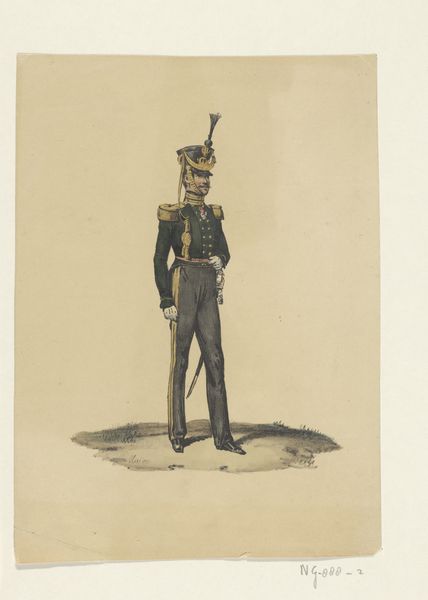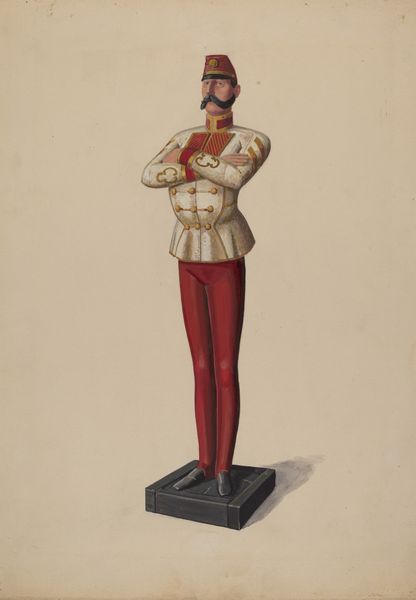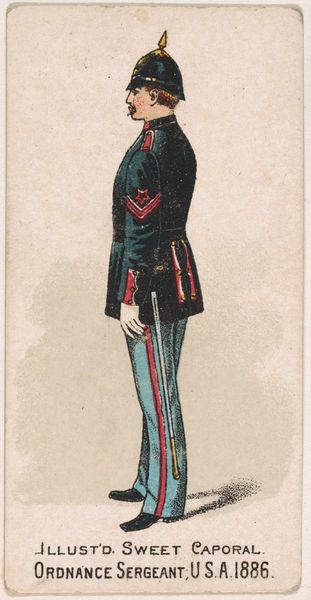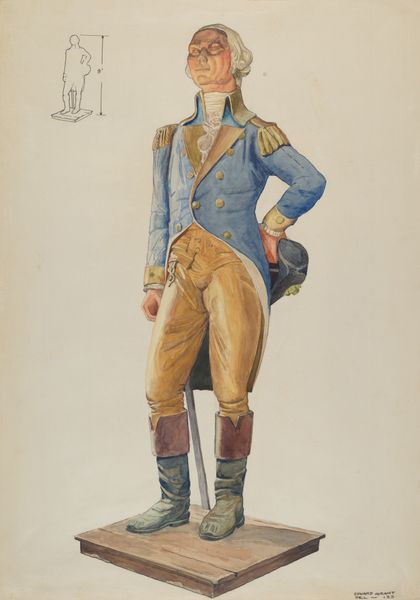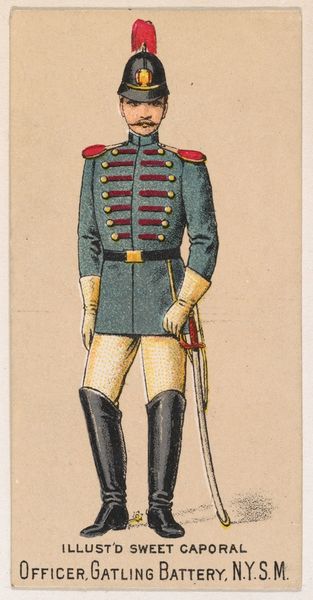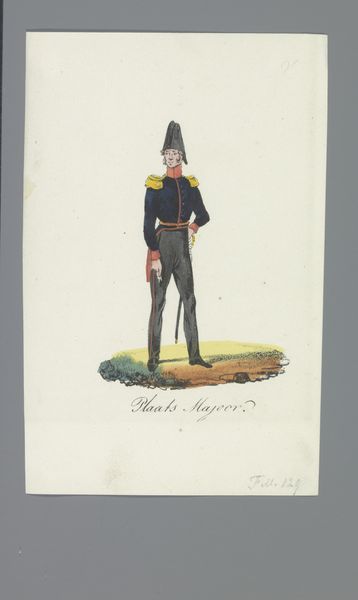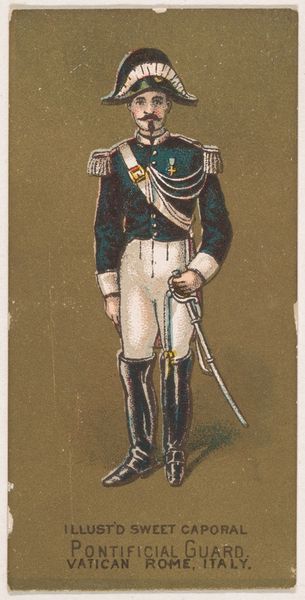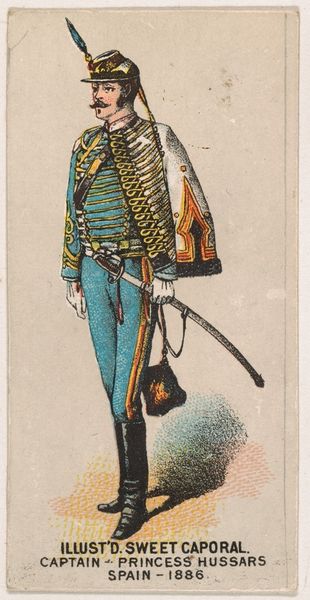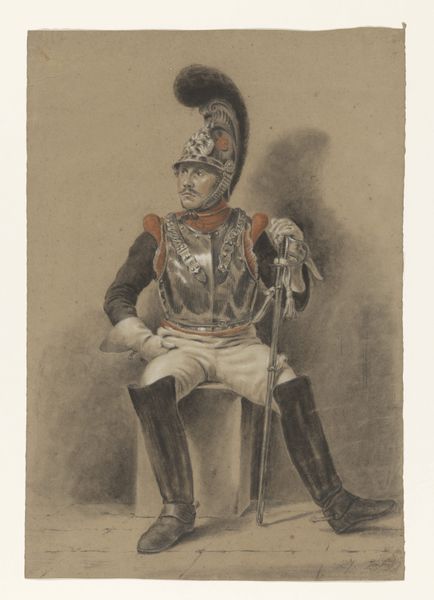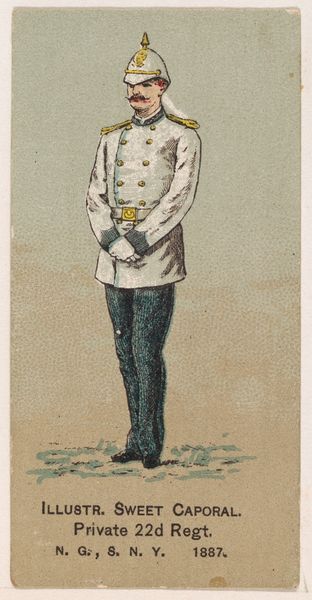
drawing, watercolor
#
portrait
#
drawing
#
watercolor
#
academic-art
Dimensions: overall: 30.4 x 22.7 cm (11 15/16 x 8 15/16 in.)
Copyright: National Gallery of Art: CC0 1.0
Editor: So, this is *Sargent's Dress Uniform*, a watercolor drawing by Jean Gordon, created around 1936. I'm really struck by how precise and detailed the uniform is, almost like a fashion plate. What do you see in this piece? Curator: I see more than just a rendering of fabric and tailoring; I see an exploration of identity through visual markers. Consider the empty space where the face should be – an absence, yet the weight of the uniform promises a presence, a role to be filled. It's fascinating how garments themselves become potent signifiers of power and status. Editor: That’s a good point. It makes you wonder about who *would* wear it, what type of power that is. Do you see the symbolic intention here, considering it's just watercolor? Curator: Absolutely! Watercolor is itself interesting. It’s more ephemeral than oils, a conscious choice to denote change, time, memory. Perhaps even the idea that identity – as represented by the uniform – is both permanent and in constant flux, carried on in each person who dons this outfit. The visual symbols, repeated again and again. Have you ever noticed, by the way, how specific patterns influence social status and ritual? Editor: Yes! This is so interesting! All those braids, stripes, clasps. Like cultural memory is embedded in design... The precision implies intent. A social construct made real by visual representation. Curator: Precisely! It also demonstrates the complex layering of symbolism in our culture, reflecting power, authority, and tradition. Editor: Well, looking at the details, as a whole new code... I hadn’t thought about dress quite this way before! Curator: And now, perhaps you will.
Comments
No comments
Be the first to comment and join the conversation on the ultimate creative platform.
